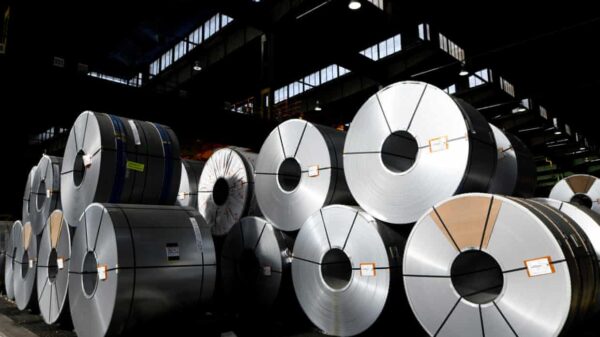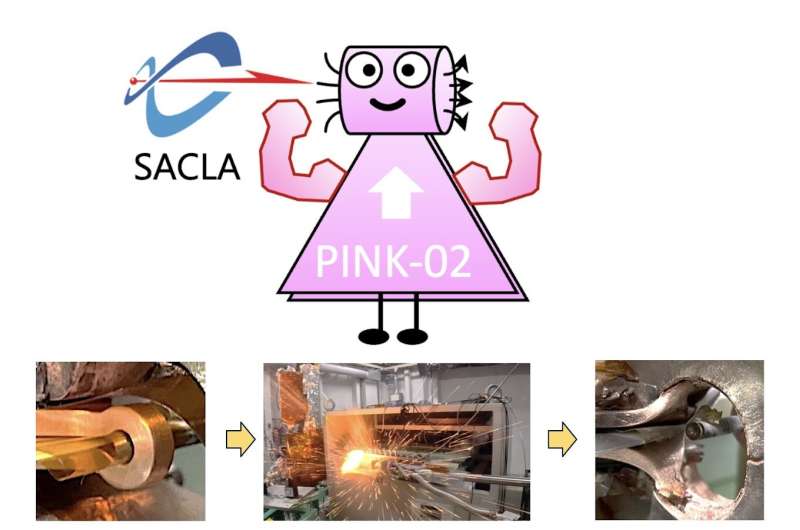Scientists at the University of Electro-Communications in Tokyo and RIKEN have made a significant breakthrough in understanding how extreme magnetic fields influence solid oxygen’s crystal structure. Their research, published on November 8, 2025, in Physical Review Letters, reveals that under magnetic fields exceeding 100 tesla, the intrinsic magnetic orientations, or spins, of electrons induce notable changes in the arrangement of atoms within the material.
The study highlights the phenomenon of magnetostriction, which occurs when a material’s crystal structure deforms in response to magnetic fields. Researchers have long faced challenges in maintaining such high magnetic fields, as they can only be sustained for brief moments—typically just a few microseconds—due to the immense pressure they place on the coils used to generate them.
To overcome this limitation, the team developed an innovative magnetic field generator known as PINK-02, capable of producing a magnetic field of approximately 110 T for a very short duration. This advancement allowed the researchers to examine solid oxygen crystals in unprecedented detail.
Capturing Atomic Positions with Advanced Techniques
Utilizing the PINK-02 generator, the researchers conducted an X-ray experiment, marking the first time such studies were performed at magnetic fields above 100 T. By firing ultrafast X-ray free-electron laser (XFEL) pulses at the solid oxygen, they captured critical snapshots of atomic positions during exposure to this extreme magnetic field.
Akihiko Ikeda, the lead author of the study, described the significance of their work, stating, “The novelty of our paper is the newly devised portable 100 T generator called PINK-02, which is essential for the study.” This combination of advanced technology has opened new frontiers in the investigation of condensed matter physics.
The analysis of the captured snapshots revealed that the crystal structure of solid oxygen underwent a substantial magnetostriction, stretching by approximately 1%. This deformation was linked to competing spin interactions and lattice forces, indicating that spins play a critical role in defining the stability of materials’ crystal structures under extreme conditions.
Implications for Future Research
The findings from this research suggest that the impact of spins on crystal structures could extend beyond solid oxygen, paving the way for future studies on various materials under similar extreme magnetic field conditions. Ikeda expressed optimism about the potential for further exploration, stating, “We will now try to uncover the crystal structure of solid oxygen called the θ phase, by further increasing the available magnetic fields up to 120 to 130 T.”
The development of the PINK-02 generator and the techniques employed in this study represent a significant step forward in the field of condensed matter physics. As researchers continue to probe the effects of high magnetic fields, the implications for material science and technology could be profound, offering insights into new phases of matter and potential applications in various industries.
By elucidating the intricate relationships between spins and crystal structures, this research not only expands our understanding of solid materials but also sets the stage for innovative advancements in the future.


































































